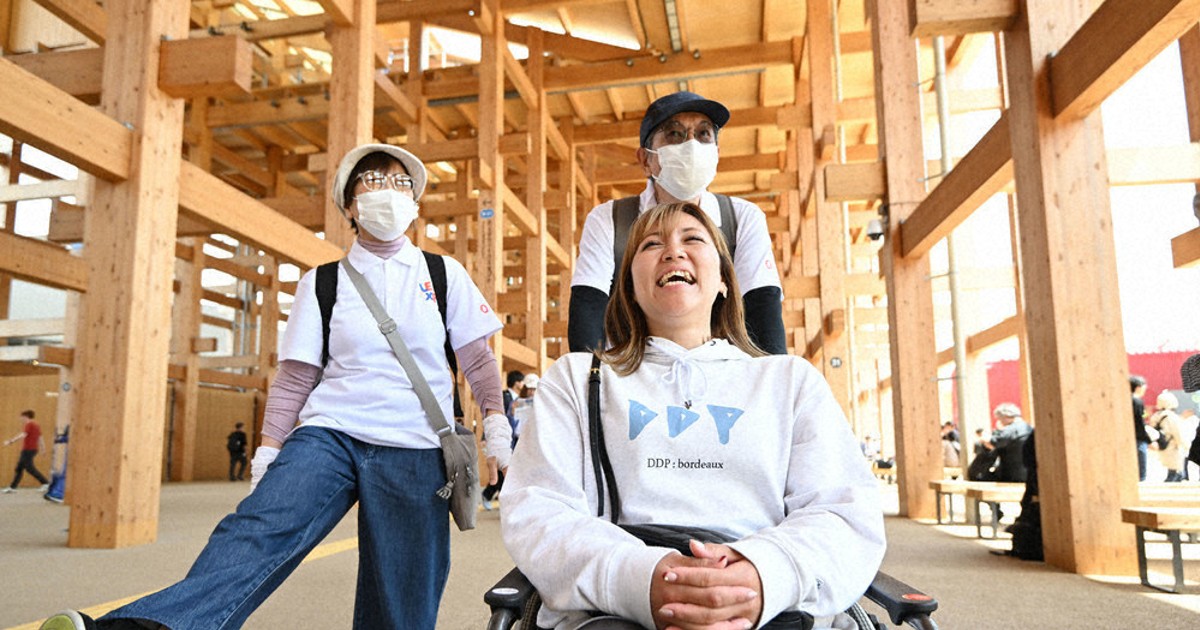EXPO's Accessible Design: A Positive Impact on Inclusivity and Experience
Introduction: The recent EXPO showcased a significant step forward in event accessibility, demonstrating how thoughtful design can create a truly inclusive and positive experience for all attendees. From wheelchair ramps to audio descriptions, the commitment to accessible design wasn't just a check-box exercise; it was integral to the overall EXPO success. This article explores the positive impact of EXPO's accessible design, highlighting key features and the broader implications for future events.
A Landmark in Inclusive Event Design
EXPO's dedication to accessibility transcended mere compliance with regulations. It was a proactive approach, woven into the fabric of the event's planning and execution. This forward-thinking strategy resulted in a significantly more welcoming and enjoyable experience for a wider range of participants. The impact is clear:
- Increased Participation: Accessible design directly translated to higher attendance from individuals with disabilities, expanding the EXPO's reach and fostering a more diverse and representative audience.
- Enhanced User Experience: Attendees with disabilities reported feeling valued and included, leading to a more positive overall experience. This positive sentiment contributes to stronger word-of-mouth marketing and future engagement.
- Positive Brand Perception: EXPO’s commitment to accessibility significantly boosted its brand reputation, projecting an image of inclusivity and social responsibility.
Key Features of EXPO's Accessible Design:
- Wheelchair Accessibility: Wide ramps, accessible restrooms, and clearly marked pathways ensured seamless navigation for wheelchair users.
- Sensory Considerations: Quiet zones were provided for individuals sensitive to noise, while visual aids and audio descriptions enhanced the experience for those with visual or auditory impairments.
- Assistive Technology Integration: The event provided readily available assistive technologies like sign language interpreters and real-time captioning services.
- Clear and Accessible Signage: Signage was large, clear, and easy to read, utilizing both visual and tactile cues.
- Accessible Information: All event information was available in multiple formats, including large print, braille, and audio.
The Broader Implications for Future Events
EXPO's success in accessible design sets a vital precedent for future events. Organizers now have a tangible example of how prioritizing inclusivity not only benefits attendees with disabilities but also enriches the overall event experience for everyone. This demonstrates that accessibility is not just a matter of compliance, but a strategic investment that yields significant returns.
Best Practices Inspired by EXPO:
- Early Planning: Integrating accessibility into the initial planning stages is crucial for effective implementation.
- Collaboration with Disability Advocates: Consulting with disability organizations ensures a truly inclusive design.
- Comprehensive Accessibility Audits: Regular audits identify and address any accessibility gaps.
- Staff Training: Equipping staff with the knowledge and skills to effectively support attendees with disabilities is essential.
- Continuous Improvement: Regularly reviewing and improving accessibility measures based on feedback ensures ongoing enhancement.
Conclusion: A Step Towards True Inclusivity
EXPO's accessible design was not merely a commendable initiative; it was a powerful demonstration of how commitment to inclusivity can create a truly exceptional event experience for everyone. By prioritizing accessibility, EXPO set a new standard for event planning, impacting not only its own success but also inspiring a positive shift towards a more inclusive future for all events. Let's work together to make accessibility a standard, not an exception.
Keywords: EXPO, Accessible Design, Inclusivity, Disability, Accessibility, Event Planning, Wheelchair Access, Sensory Considerations, Assistive Technology, Inclusive Events, Social Responsibility, Brand Reputation, Best Practices, Accessible Information, Universal Design
External Links: (Consider linking to relevant organizations promoting accessibility or articles discussing inclusive event planning.)
Internal Links: (Link to other relevant articles on your website about accessibility or event planning if applicable)
